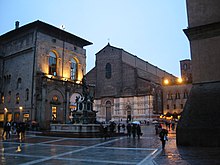June 29th, it's the year 1613:
 🎭 Shakespeare's play Henry VIII is just being performed. For the stage effect, the company fires a cannon and sets the Globe Theater on fire. Here Shakespeare had premiered many of his later world-famous plays. From 1598 he was even one of the four actors who bought shares of the theatre. Within two hours his creative home, the stage he wrote for, is destroyed by fire.
🎭 Shakespeare's play Henry VIII is just being performed. For the stage effect, the company fires a cannon and sets the Globe Theater on fire. Here Shakespeare had premiered many of his later world-famous plays. From 1598 he was even one of the four actors who bought shares of the theatre. Within two hours his creative home, the stage he wrote for, is destroyed by fire.
 🏗️ Centuries later, American actor Sam Wanamake has a vision of rebuilding the Globe Theatre. The Queen opened the reconstructed Globe Theatre in 1997 and since then drama is back on stage - just like in Shakespeare's day.
🏗️ Centuries later, American actor Sam Wanamake has a vision of rebuilding the Globe Theatre. The Queen opened the reconstructed Globe Theatre in 1997 and since then drama is back on stage - just like in Shakespeare's day.
30 June 2018
Victorian Gothic and Art Deco Ensemble of Mumbai

©Abha_Narain_Lambah_Associates
The World Heritage Committee, meeting in Manama since 24 June under the chair of Shaikha Haya Bint Rashed al-Khalifa of Bahrain, inscribed four cultural sites on the World Heritage List this morning. The inscription of sites will continue through 1 July.
The new World Heritage sites, in order of inscription, are:
Victorian Gothic and Art Deco Ensemble of Mumbai (India) – Having become a global trading centre, the city of Mumbai implemented an ambitious urban planning project in the second half of the 19th century. It led to the construction of ensembles of public buildings bordering the Oval Maidan open space, first in the Victorian Neo-Gothic style and then, in the early 20th century, in the Art Deco idiom. The Victorian ensemble includes Indian elements suited to the climate, including balconies and verandas. The Art Deco edifices, with their cinemas and residential buildings, blend Indian design with Art Deco imagery, creating a unique style that has been described as Indo-Deco. These two ensembles bear testimony to the phases of modernization that Mumbai has undergone in the course of the 19th and 20th centuries.
Sassanid Archaeological Landscape of Fars region (Islamic Republic of Iran) – Eight archaeological sites situated in three geographical parts in the southeast of Fars Province: Firuzabad, Bishapur and Sarvestan. These fortified structures, palaces, and city plans date back to the earliest and latest times of the Sassanian Empire, which stretched across the region from 224 to 658 CE. Among these sites is the capital built by the founder of the dynasty, Ardashir Papakan, as well as a city and architectural structures of his successor, Shapur I. The archaeologic landscape reflects the optimized utilization of natural topography and bears witness to the influence of Achaemenid and Parthian cultural traditions and of Roman art which had a significant impact on the architecture and artistic styles of the Islamic era.
Hidden Christian Sites in the Nagasaki Region (Japan) – Located in the north-western part of Kyushu island, the 12 components of the site consist of ten villages, Hara Castle and a cathedral, built between the 16th and 19th centuries. Together they reflect the earliest activities of Christian missionaries and settlers in Japan – the phase of encounter, followed by times of prohibition and persecution of the Christian faith and the final phase of the revitalization of Christian communities after the lifting of prohibition in 1873. These sites bear unique testimony to a cultural tradition nurtured by hidden Christians in the Nagasaki region who secretly transmitted their faith during the period of prohibition from the 17th to the 19th century.
Sansa, Buddhist Mountain Monasteries in Korea (Republic of Korea) – The Sansa are Buddhist mountain monasteries located throughout the southern provinces of the Korean Peninsula. The spatial arrangement of the seven temples that comprise the site, established from the 7th to 9th centuries, present common characteristics that are specific to Korea – the “madang” (open courtyard) flanked by four buildings (Buddha Hall, pavilion, lecture hall and dormitory). They contain a large number of individually remarkable structures, objects, documents and shrines. These mountain monasteries are sacred places, which have survived as living centres of faith and daily religious practice to the present.
The 42nd session of the World Heritage Committee continues until 4 July.
****
Live webcast: http://whc.unesco.org/en/sessions/42COM/ - live
Media contacts
Lucía Iglesias Kuntz, UNESCO Media Section, l.iglesias@unesco.org, +33 (0) 6 80 24 07 29
Agnès Bardon, UNESCO Media Section, a.bardon@unesco.org, +33 (0) 6 80 24 13 56
All the documents pertaining to the work of the Comité are available online
http://whc.unesco.org/en/sessions/42com/documents/
http://whc.unesco.org/en/sessions/42com/documents/
Follow the Committee on Twitter: #WorldHeritage #42WHC
Follow us:
Twitter: @UNESCO
Facebook: @UNESCO














